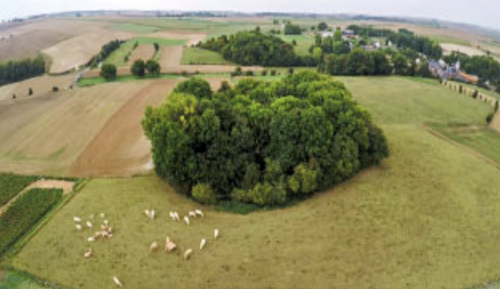Hawthorn Ridge : a forensic investigation into the archaeology and history of Hawthorn Crater
- Home
- World War I Articles
- Hawthorn Ridge : a forensic investigation into the archaeology and history of Hawthorn Crater

A podcast from the team at the Hawthorn Ridge Crater Association
The Hawthorn Redoubt was an formidable defensive position for the Germans which was blown up on the morning of 1 July 1916 by a mine that had been placed beneath the German stronghold on the ridge. The explosion, ten minutes before the whistles blew at 7:30am, destroyed the position but the timing of the detonation and the lifting of the artillery barrage meant that the position was reinforced by the Germans, leading to massive losses among the attacking British troops.
In this warm and engaging podcast, producer Fiona Graham and historian Colin Winn walk to the craters and tour their perimeter. While doing so they share with us their stories behind this exciting project into the crater and talk about the special relationship that has developed with the local community. Colin is a military historian and tunnelling expert and Fiona an associate professor on the project.
The explosion of the mine under Hawthorn Ridge was the very first action of The Battle of the Somme.
It was recorded by Geoffrey Malins at 7.20am on the 1st July 1916 and is one of the best-known pieces of film of the Great War. The moment of the explosion was also captured by Ernest Brooks who took a series of photographs from this point on 1 July 1916.
Geoffrey Malins said, "The ground where I stood gave a mighty convulsion. It rocked and swayed. I gripped hold of my tripod to steady myself. Then for all the world like a gigantic sponge, the earth rose high in the air to the height of hundreds of feet. The higher and higher it rose, and with a horrible grinding road the earth settles back upon itself, leaving in its place a mountain of smoke".
The mine was blown for a second time on the 13th November when the 51st Highland Division captured the ridge and village.
The project study is initially looking at the period between these events from both sides of No Man’s Land, giving a German perspective to our understanding.
Fiona and Colin are part of an international multi-disciplinary team leading the investigation into the site finding answers in this unique military time capsule.
The site which borders onto the French town of Beaumont Hamel is the last piece in the story of the famous battle and the new work hopes to create answers in history and capture them on film for the public as well as opening up the site to tourism.
Until now the Hawthorn Crater site was private but due to a monumental deal for access for the research project with the French community, we are now after 18 months on the Somme unearthing new answers to the crater’s history.
Note: The Hawthorn Ridge Crater Association is a Franco-British collaboration. It is supported by Keele and Staffordshire Universities in the U.K, and using the services of experienced Great War archaeologists and historians.





